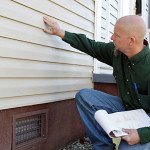By: Patricia Anne Tom
Before purchasing a house, it’s important to hire a home inspector to evaluate the home from bottom to top—including the attic.
This often-overlooked storage space can provide visual cues to potential problems in the safety and structural integrity of a home.
If there is damage present, the inspection can help you determine what to bring into the sale negotiations, including an estimate of repair costs.
Look at these three primary areas when analyzing the attic.
1. Structural Damage
Before closing on a home, the home inspector should examine the attic for structural damage. Damage to the trusses and rafters can indicate that the home has shifted, causing them to crack or break. A substandard level of wood quality, improper construction or incorrect lumber size may have allowed these pieces to deteriorate and could cause the roof to sag and eventually leak.
If there has been fire damage, you should be able to see evidence in black marks from charred or smoke-damaged wood. However, check to see that such damage hasn’t been camouflaged with layers of paint.
Because water usually enters the shell of the home from the roof and not from the sides, you may see water stains if the roof is leaking or has leaked in the past. Signs of moisture also could indicate that ventilation is inadequate.
Inspectors also may be able to see pest damage from termites if they have eaten the wood (or from other rodents that can leave chew marks on wires and insulation or excrement). Rodents like squirrels and rats often enter through the eaves or loose boards.
2. Proper Insulation
An attic must be properly insulated with the required R-level of insulation material for your climate: the colder the climate, the higher R insulation number. Your home inspector will note whether this is up to code, as the code may have changed since the home’s original construction.
An inspector also should be able to tell you whether insulation has been placed properly and in the correct direction, according to the type of batts (sections of insulation backed with heavy paper) or blow-in insulation used.
In addition, attic windows and dormers should be properly insulated and in good condition to prevent outdoor elements from entering into the attic.
3. Chimney and Storage Areas
An attic inspection will show the condition of the exterior of the chimney shaft under the roof. It should be sealed properly where it meets the attic floor and roof. The condition of the bricks and mortar should be solid—not cracked and crumbly.
Although this inspection will not tell you what the interior chimney shaft condition is like, it will give you an idea of the chimney’s exterior structural health.
While the inspector performs the attic inspection, note the condition of storage areas and attic floors, look for damaged floorboards and again look for evidence of water, pest and fire damage.
Crawling into the attic may be uncomfortable, but a proper inspection will help to ensure there are no skeletons in the attic that will haunt the integrity of your future home.
Updated from an earlier version by Philip Commins.





